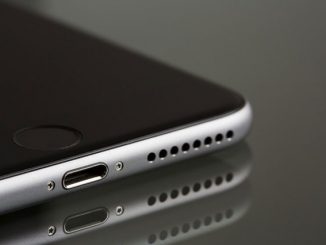- Apple’s (AAPL) stock fell nearly 9% to $204.41 due to Trump’s tariffs of 54% on China (85-90% of hardware), 46% on Vietnam, and 26% on India, risking an 8.5-9% profit margin drop without price hikes, per analyst Ming-Chi Kuo.
- Shifting iPhone production to India (10-12% in 2024, 15% by 2025, potentially over 30%) and Vietnam could lower the profit hit to 1-3% if they secure tariff exemptions, which Kuo sees as more likely than China relief.
- Apple can counter costs with high-end sales (65-70% of U.S. models), carrier subsidies, Trade-In adjustments, or supplier pressure, keeping long-term margins above 40%, though economic slowdowns may delay upgrades, Kuo notes.

Apple (AAPL) stock dropped nearly 9% to $204.41 in early trading on Thursday, even hitting a low of $202.52 during the day, as new tariff policies from the Trump administration rattled investors. Apple analyst Ming-Chi Kuo, a well-known expert on the $3.36 trillion market cap company, shared insights on X that help explain what’s happening. He pointed out that 85-90% of Apple’s products, like iPhones, are made in China, where a hefty 54% tariff now applies, while Vietnam faces 46% and India 26%. This means it’ll cost Apple more to send its goods to the U.S., and if they don’t raise prices, their profit margin – the money left after expenses – could fall by 8.5-9%, according to Kuo.
Kuo also highlighted that Apple’s already shifting some iPhone production to India, where 10-12% of its global supply came from in 2024, with plans to reach at least 15% by 2025. If India and Vietnam can get tariff exemptions from the U.S., which Kuo thinks is more likely than China getting a break, Apple could cut that profit hit to 5.5-6%. Even better, if India ramps up to over 30% of iPhone production and avoids tariffs, the damage might shrink to just 1-3%. This shift away from China could pick up speed as Apple looks to protect its bottom line, though it’s unclear how fast this will happen.
Apple’s not out of moves, though, and Kuo credits the company with smart options. In the U.S., 65-70% of new iPhone sales are high-end models, and those buyers are more okay with paying extra. Apple could also team up with phone carriers for bigger discounts or trim what they offer in the Trade-In program to keep price increases less noticeable. Another tactic is pushing suppliers to lower their costs, which could help balance things out. Kuo believes that even if profits dip below 40% for a while, they’ll bounce back above that level over time. Still, he warns that the real challenge might be if these tariffs hurt the economy, making people hold onto their devices longer, which could slow Apple’s sales more than the tariffs alone. Thanks to Ming-Chi Kuo’s analysis, it’s clear Apple faces a tough spot but has ways to fight back.
WallStreetPit does not provide investment advice. All rights reserved.
- Bulenox: Get 45% to 91% OFF ... Use Discount Code: UNO
- Risk Our Money Not Yours | Get 50% to 90% OFF ... Use Discount Code: MMBVBKSM
Disclaimer: This page contains affiliate links. If you choose to make a purchase after clicking a link, we may receive a commission at no additional cost to you. Thank you for your support!





Leave a Reply